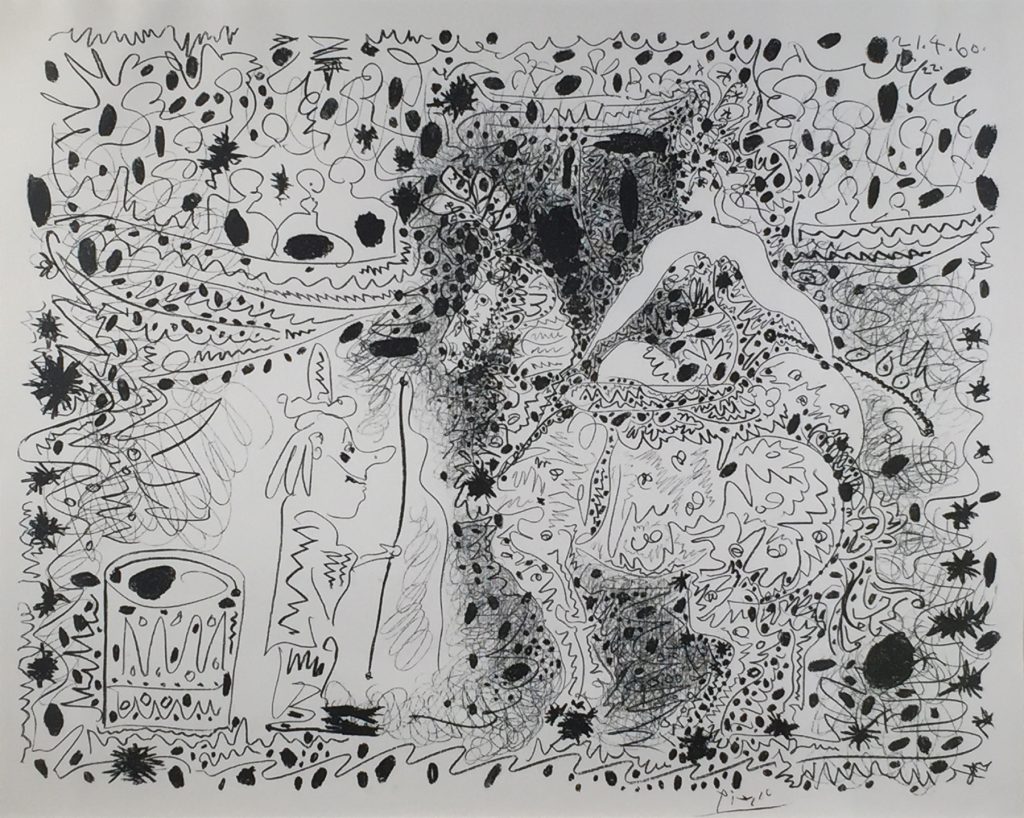
L’ecuyere (The Horseback Rider), 1960
Lithograph on paper, 20 x 25 inches
Gift of Dr. Randal Lengeling, 2015.29
This original lithograph was created using crayon (with frottage*) on lithographic paper and transferred to a stone. There were 200 signed and numbered impressions on thin white vellus plus 1000 impressions signed in the stone, of which the DuMA’s is one of these.
In this lithograph, Picasso displays the most famous Surrealist technique called “automatic drawing” which requires the artists to draw freely on a blank paper, without worrying about composition, proportions, or even content. Like the Surrealists, Picasso used this technique as a means to avoid representation and allowing the unconscious mind to create.
This 1960 print is an example of Picasso’s late career work being a precursor to the Neo-Expressionist movement of the 1970s. Depicted is a costumed female performer on a horse in the center ring of a crowded circus. A clown is holding a dressage whip to the left of the horse, next to a patterned circus podium.
*Interesting fact: Max Ernst developed the frottage technique in the early 1920s. Frottage is made by laying sheets of paper over textured surfaces and rubbing with graphite. This creates an impression on the paper of the surface texture.